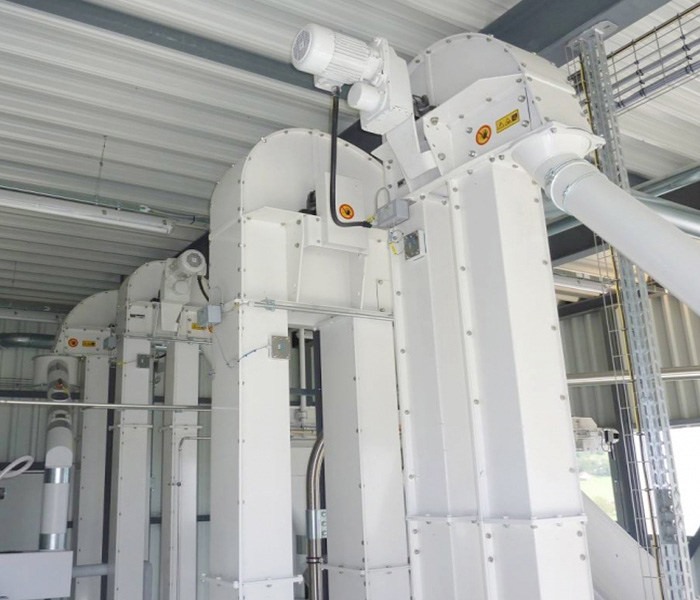Emergency response is essential! Analysis of Common Faults of Bucket Hoist
Bucket elevator is a kind of continuous conveying machine that uses a series of hoppers fixed evenly on endless traction components to lift materials vertically. Bucket elevator uses a series of hoppers fixed on traction chain or tape to convey bulk materials vertically or near vertically. But in this process, Wangwang will have some faults. At this time, we need to know a certain amount of relevant knowledge in order to effectively solve the problem. Here are four aspects for you to make a brief introduction

1. Slipping of hopper belt
Bucket elevator uses friction moment between hopper belt and head wheel drive shaft to lift and transport materials. Inadequate tension of hopper belt will lead to slippage of hopper belt. At this time, the machine should be stopped immediately and the tensioning device should be adjusted to tighten the hopper belt. If the tensioning device can not make the hopper belt fully tensioned, it means that the travel of the tensioning device is too short, and should be readjusted.
The solution is to untie the bucket belt joint, make the tensioning device on the bottom wheel set to the highest position, put the bucket belt from the head of the hoist, pass through the head wheel and the bottom wheel, and connect the head and tail well, so that the bucket belt is in the state of tension and not tension. Then the tensioner is fully tightened. At this time, the unused tensioning stroke of the adjusting screw of the tensioning device should not be less than 50% of the whole stroke.
2. Hopper belt deviation
The bucket belt joint is not normal. The bucket belt joint refers to that the edge line of the bucket belt is not in the same straight line after the bucket belt is combined. When working, the hopper belt is tightened and loosened at the same time, which makes the hopper belt move toward the tightened side side, resulting in deviation, inadequate hopper filling, incomplete unloading, increasing recycling, decreasing productivity, and even causing the hopper belt jamming and tearing in serious cases.
At this time should stop, correct the joint and connect.

3. Too much recycling
When the hopper runs too fast to lift different materials, the hopper runs at different speeds: generally when dry powder and granular materials are lifted, the speed is about 1-2 m/s; when bulk materials are lifted, the speed is 0.4-0.6 m/s; when wet powder and granular materials are lifted, the speed is 0.6-0.8 m/s. The speed is too high, unloading ahead of schedule, resulting in recycling.
At this time, according to the material raised, the hopper speed should be reduced appropriately to avoid recycling.
4. Bucket shedding
In production, when the machine is turned on, there is often a sudden power failure or other reasons to shut down. If the machine is turned on again, there is no removal of the accumulated material in the machine seat, it is easy to cause the hopper to suffer too much impact and break off.
Between shutdown and start-up, the accumulated physics in the rack must be removed to avoid hopper falling off. In addition, regularly check whether the connection between hopper and hopper belt is firm or not. When the phenomenon of loosening, falling off, skew and breakage of hopper is found, timely repair or replacement should be carried out in order to prevent more accidents.
Address:China,Yanjin county forest park gate to the west 1000 meters north road.